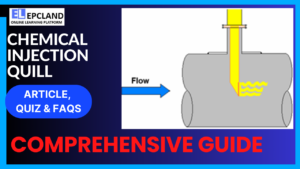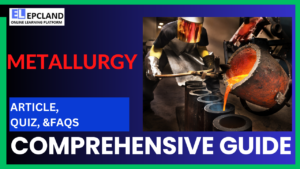1. Definition of Pipe Support when we talk about Pipe Supports and Pipe Restraints
What is the primary function of a pipe support when we compare Pipe Supports and Pipe Restraints?
Explanation: Pipe supports primarily carry vertical loads to provide support for the piping system.
2. Definition of Pipe Restraint
What is the primary purpose of a pipe restraint?
Explanation: Pipe restraints primarily limit the movements of the pipe to take care of horizontal loads.
3. Difference between Pipe Support and Pipe Restraint
How do pipe supports and restraints differ based on their functions?
Explanation: Pipe supports carry vertical loads, while pipe restraints limit horizontal movements, indicating a clear difference in their functions.
4. Examples of Pipe Restraints
Which of the following is an example of a pipe restraint?
Explanation: A guide is an example of a pipe restraint as it limits the movement of the pipe, taking care of horizontal loads.
5. Pipe Support System Terminology
What term is commonly used to refer to both pipe supports and restraints collectively?
Explanation: The term “pipe support systems” is commonly used to refer to both pipe supports and restraints collectively.
6. Pipe Support System Composition
What does the term “pipe support” encompass when used collectively?
Explanation: The term “pipe support” collectively refers to both pipe supports and restraints, making up the entire pipe support system.
7. Clarification of Terminology
What does the term “Simple Rest” refer to based on the provided information?
Explanation: A “Simple Rest” is considered a pipe support, aligning with the definition provided in the information.
Don’t Miss 20+ Quizzes on Pipe Supports:
Short Article on Pipe Supports and Pipe Restraints
Difference between pipe supports and pipe restraints, although the terms are often used interchangeably. Here’s a breakdown:
Pipe Supports:
- Function: Primarily carry the weight (vertical load) of the piping system.
- Types: Include saddles, shoes, hangers, rollers, and beams.
Pipe Restraints:
- Function: Primarily limit the movement (horizontal or lateral load) of the piping system.
- Types: Include guides, line stops, anchors, and sway braces.
Key Differences:
- Load: Supports handle vertical loads, while restraints handle horizontal/lateral loads.
- Movement: Supports allow some movement, while restraints restrict it.
- Combination: Often, pipe restraints are used in conjunction with pipe supports to create a complete pipe support system.
Simple Analogy:
Imagine a tightrope walker. The support cable acts like a pipe support, holding the walker’s weight (vertical load). But without something to prevent them from swaying, they’d fall. That’s where the bar they hold comes in – a pipe restraint, limiting their horizontal movement.
Combined System:
Think of a car. Its suspension system acts like a pipe support system. The springs and shocks carry the car’s weight (vertical load), while the control arms and tie rods limit its movement (horizontal/lateral loads) during turns and bumps.
So, while there’s a distinction, pipe supports and restraints work together to ensure the safe and stable operation of piping systems.
Table of Contents
Don’t miss the Course on Effective Isometrics Management: Check Now
Enrollment Link
Recommended courses (Published on EPCLand)
- Complete Course on Piping Engineering
- Basics of Piping Engineering
- Piping Layout Engineering
- Piping Material Engineering
- Piping Stress Analysis
- Material Requisitions
- Piping Material Specifications
- Valve Material Specifications
- Plant Design & Layouts-OISD 118
- Isometric Management
Library of Technical Articles
Don’t miss out the collection of 15+ articles on following topics:
- Basics of Oil and Gas Industry
- Valves
- Testing
- Tank
- Piping Bulk Items
- Pipe
- Metallurgy
- Piping Materials
- Layout
- Instrumentation
- Heat Exchanger
- Type of Contracts
- Codes and Standards
- ASTM Standards
- Articles on Piping Specialty Items
Video details of Complete Course on Piping Engineering
Why Enroll in the EPCLand
Proven Track Record– PTR
Activities & Achievements before launching EPCLand
- Published more than 50+ short courses
- 3000+ Enrolments
- More than 3,500,00 Minutes of watch hours in the last 2 years
- 4000+ Students in 100+ Countries
- Rating of 4+ out of 5
- 1000+ YouTube Videos
- 8K+ Subscribers
What Students will Learn
- Codes & Standards of the Energy Sector
- Piping Material Engineering
- Piping Layout Engineering
- Stress Analysis
Interesting facts
- All the published courses have been developed by Industry Experts with more than 2 decades of experience
- Content is based on Practical experience and real-time problems.
- Content is designed and organized in such a manner that it can be easily grabbed.
- Complete website, Blogs and Quiz sections are Planned, Designed and published by myself (About me: Atul Singla)
- Complete flexibility of Time & Location, Students can access the content from anywhere & anytime
- Moreover, once enrolled, the content can be access as many times as you want, which helps in understand the fundamentals in a better way.
Conclusion
In conclusion, our courses are meticulously crafted by industry experts with over two decades of hands-on experience. The content is rooted in practical knowledge, addressing real-time problems. The material is thoughtfully designed and organized for easy comprehension. Every aspect, from the website to blogs and quizzes, has been planned, designed, and executed by Atul Singla, ensuring a comprehensive and seamless learning experience. With the flexibility of accessing the content at any time and from any location, students have the freedom to learn on their terms. Furthermore, enrollment grants unlimited access, allowing learners to revisit the material as often as needed, fostering a deep understanding of the fundamentals.



